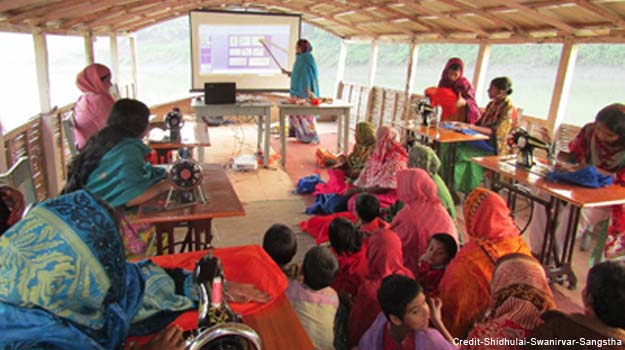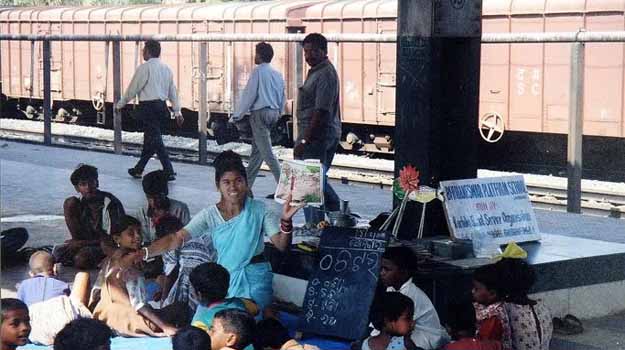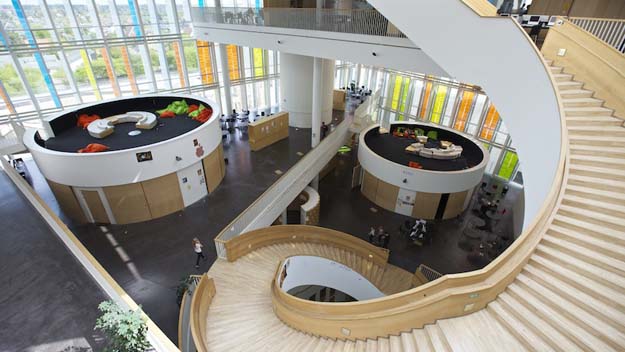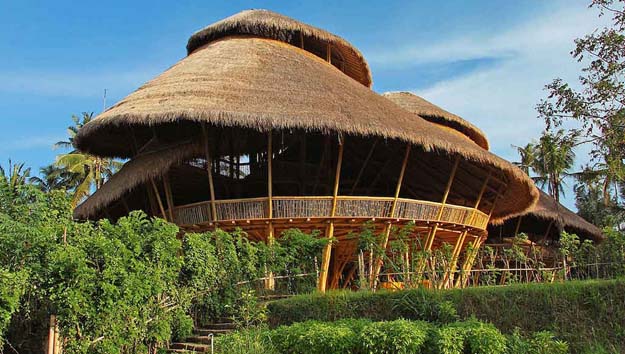We’re all familiar with a set way of learning and one that is likely to have been taught to us when we were in school. It might have looked like a classroom in which a teacher made you write lines, take exams or even showed you a video or two for a more interactive set of lessons. Some schools are challenging this way of doing things. Whether they are bringing the class to the students or expanding boundaries, these schools are giving young people the opportunity to learn and engage in ways that would not have been possible otherwise. Here are the top five most interesting schools we’ve found that do just that:
• Floating Boat schools – In Bangladesh, where the people are prone to regular floods, schools may become inaccessible for children. To address this, some schools have been built on boats that come right to the doorstep of students. They are even powered by solar and have WiFi meaning students have access to light and can use computers and other multimedia.

• Brightworks school – In the US, one school encourages learning set by the students themselves. Known as the ‘dangerous school’, they encourage students to come up with and then run their own projects which can include playing with fire, taking apart electrical appliances or even construction projects. All sessions are overseen by moderators who help to guide student thinking but encourage real world application.
• Train platform school – In Orissa India, a school started on a train platform is designed to educate children who could not attend school for reasons such as poverty or having to work. The aim was to provide schooling with minimal disruption to a child’s routine so they can work and study, and then either transition to mainstream schools or take up a vocation. The school uses songs, dramas, field trips, music and puppetry to make learning much more fun.

• Ørestad Gymnasium – In Ørestad Denmark, the high school is designed in such a way that it discourages long, boring lectures. The school is designed to be open plan meaning no walls and no classrooms. The space is loosely defined by permeable borders. It also means that teachers have to think outside of the box to make sure students are engaged.

• Green school – In Bali Indonesia, one school aims to be the most eco-friendly school in the world. Green School opted to throw out the traditional approach to education and started from scratch when it came to its curriculum. Here, students learn both the business and the farming skills required to grow and bring crops to market. Understanding the real-world application allows students to see the value of what they are learning instead of sitting in a classroom undertaking abstract exercises.

